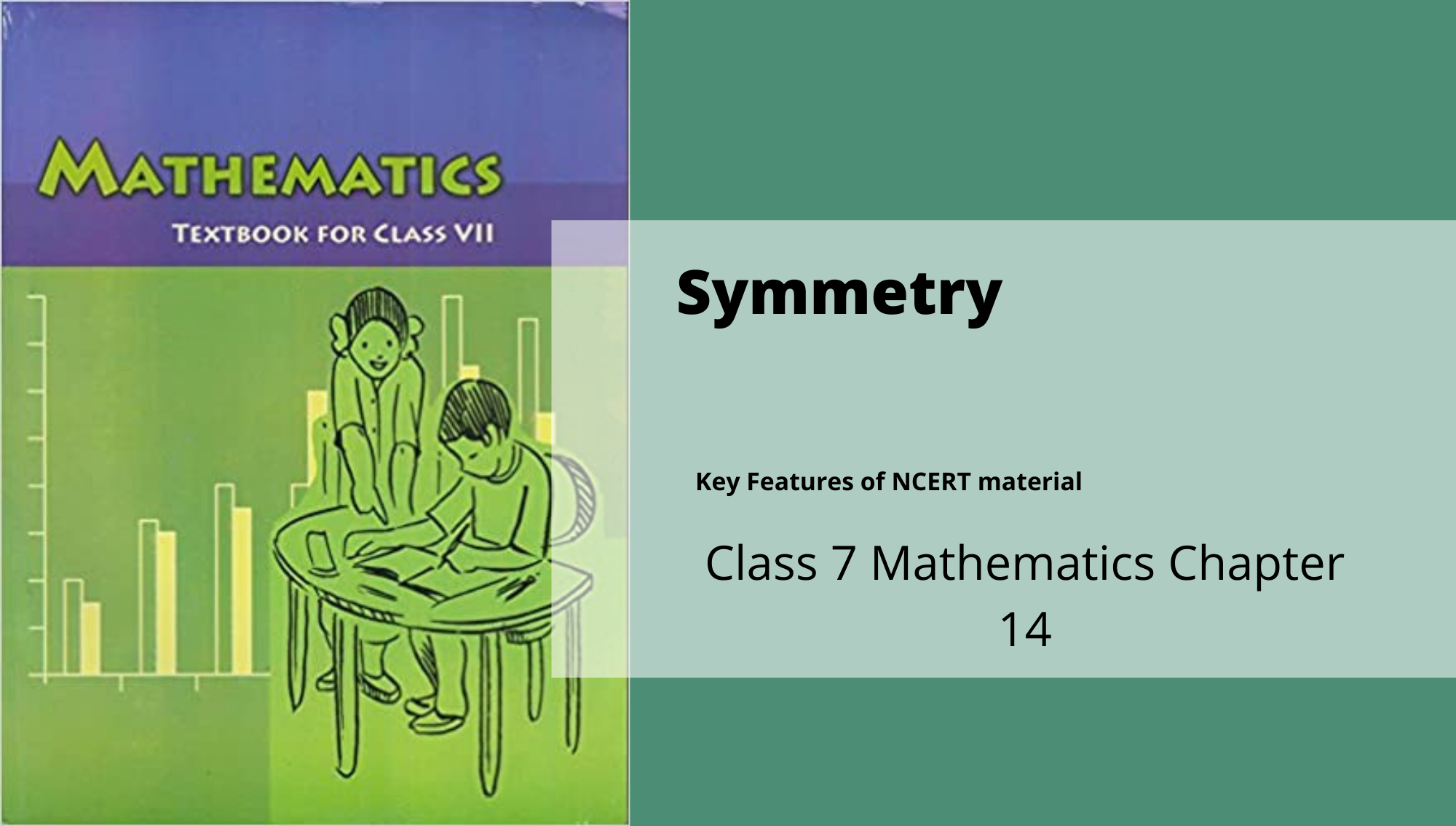Symmetry: Maths Class 7 Chapter-14

Key Features of NCERT Material for Class 7 Maths Chapter 14 – Symmetry
Quick revision notes
In Chapter 13 of Class 7 NCERT book: , exponents and powers, you must have learnt about . In chapter 14: you will learn about various forms of symmetry.
Symmetry
If two or more parts of a figure are identical after folding or flipping then it is said to be symmetry. To be symmetrical the two halves of a shape must be of same shape and size.
If the shape is not symmetrical then it is said to be asymmetrical.
Line of Symmetry
It is an imaginary line which divides the image into two equal halves. It could be horizontal, vertical or diagonal. There could be one or more than one line of symmetry in a figure.
Lines of Symmetry for Regular Polygons
If all the sides and angles of a polygon are equal then it is said to be a regular polygon. Like the equilateral triangle, square etc.
All the regular polygons are symmetrical shapes.
Types of Symmetry
There are two types
If we draw a dotted line which gives the mirror reflection of the other half of the image then it is reflection symmetry. It is the same as basic symmetry which tells us that if the dotted line divides the image into two equal halves then it is the reflective symmetry of the figure.
If we rotate the image at a centre point of the image at 360° then the number of times the image looks the same, shows the rotational symmetry of the image.
Regular polygons have equal sides and equal angles. They have multiple (i.e., more than one) lines of symmetry. Each regular polygon has as many lines of symmetry as it has sides.
| RegularPolygon | RegularHexagon | RegularPentagon | Square | EquilateralTriangle |
| Number of Lines of Symmetry | 6 | 5 | 4 | 3 |
Rotational
Rotation, like the movement of the hands of a clock, is called a clockwise rotation; otherwise, it is said to be anticlockwise.
When an object rotates, its shape and size do not change. The rotation turns an object about a fixed point. This fixed point is called the centre of rotation. The angle by which the object rotates is called the angle of rotation.
A half-turn means rotation by 180°; a quarter-turn means rotation by 90°.
Rotation may be clockwise or anticlockwise.
If, after a rotation, an object looks exactly the same, we say that it has rotational symmetry.
In a complete turn (of 360°), the number of times an object looks exactly the same is called the order of rotational symmetry. For example, the order of symmetry of a square is 4 while, for an equilateral triangle, it is 3.
Line Symmetry and Rotational Symmetry
Some shapes have only one line of symmetry, like the letter E;
Some have only rotational symmetry, like the letter S;
and some have both symmetries like the letter H.
The study of symmetry is important because of its frequent use in day-to-day life and more because of the beautiful designs it can provide us.
A figure is said to be symmetrical about a line l if it is identical on either side of l. In the adjoining figure, / is the line of symmetry or axis of symmetry.
Regular polygons have equal sides and equal angles. They have multiple (i.e. more than one) lines of symmetry.
Each regular polygon has as many lines of symmetry as it has sides.
Lines of Symmetry of some Irregular Polygons.
Each of the following capital letters of the English alphabet is symmetrical about the dotted line or lines as shown:
A figure is said to have rotational symmetry if, after a rotation, an object looks exactly the same.
The fixed point, about which the rotation turns an object (not changing its shape and size) is called centre of rotation.
In a complete turn (of 360°), the number of times an object looks exactly the same is called the order of rotational symmetry.

